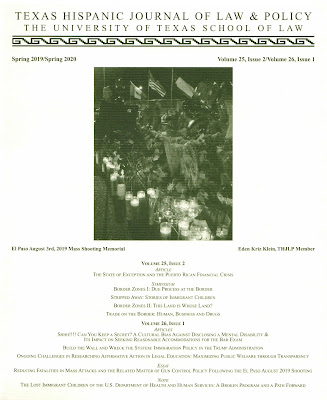While our powers-that-be in Congress wring their hands over trying to reconcile allegiance to our corporate overlords with antitrust in the tech sector, a court decision in Uruguay is worth noting. The Supreme Court of Justice in the country of La Celeste held constitutional a law that compels the free live broadcast of some national soccer and basketball games.
 |
| Uruguay v. Costa Rica in World Cup 2014 (Danilo Borges/Portal da Copa CC BY 3.0 BR) |
The ruling, sentencia no. 244 de 17 de agosto 2020 (search "244/2020" here), doesn't cover many games. Explaining the case in 2019, a representative of the appellant Uruguayan Football Association (AUF) told El Observador (Uruguay) that the law would cost the franchise only some of nine Uruguay football qualifiers in four years. AUF still insisted that its economic interests were meaningfully and unconstitutionally diminished by the imposition.
Notwthstanding the limited reach of the ruling, the Court's willingness to abrogate private economic rights to further the public interest is significant. Accepting the rationale for the law, the Court wrote, "Recuerda y resalta la Corte que la selección uruguaya de fútbol, en función de las hazañas deportivas y copas obtenidas en campeonatos mundiales y juegos olímpicos, forma parte de la identidad nacional y es tópico actual y recurrente en la ciudadanía." ("The Court recalls and emphasizes that the Uruguayan football team, as a function of its sporting achievements and championships won in the World Cup and Olympic Games, forms part of the national identity and is a current and continuing subject among the people.")
The ruling, on article 39 of the Ley de Medios, No. 19307, is one in a series from Uruguayan high courts (e.g., Observacom, Aug. 15) in recent months examining constitutional challenges to a far-ranging 2015 package of populist telecommunication reforms. Civil rights advocates have hailed the courts' rulings for upholding the constitutional framework of the media law overall. But business challengers have succeeded in blocking some restrictions, such as a limitation on subscriber numbers for cable TV providers, as unduly burdensome of commercial freedom. For further example of the mixed results, the Court upheld article 40, which licenses Televisión Nacional de Uruguay to broadcast a game if no other broadcaster bought the rights. But the Court struck down a subparagraph of article 39 that gave the executive authority to convert matches to free TV by resolution recognizing the public interest.
The telecommunication reforms have been championed by "center-right" Uruguay President Luis Lacalle Pou, who came to power in March 2020 after a hard-fought election and contested run-off. Upon a campaign theme of "Uruguay seguro, transparente y de oportunidades," President Lacalle Pou promised to push back against left-leaning policies of the previous fifteen years with a raft of reforms aimed at slashing spending, controlling crime, combating corruption, and realigning foreign policy. Whether or not he could have delivered, he has been, like leaders around the world, hampered by the coronavirus crisis.
Hat tip at Observacom Executive Director Gustavo Gómez (Twitter) for reporting on the case.










